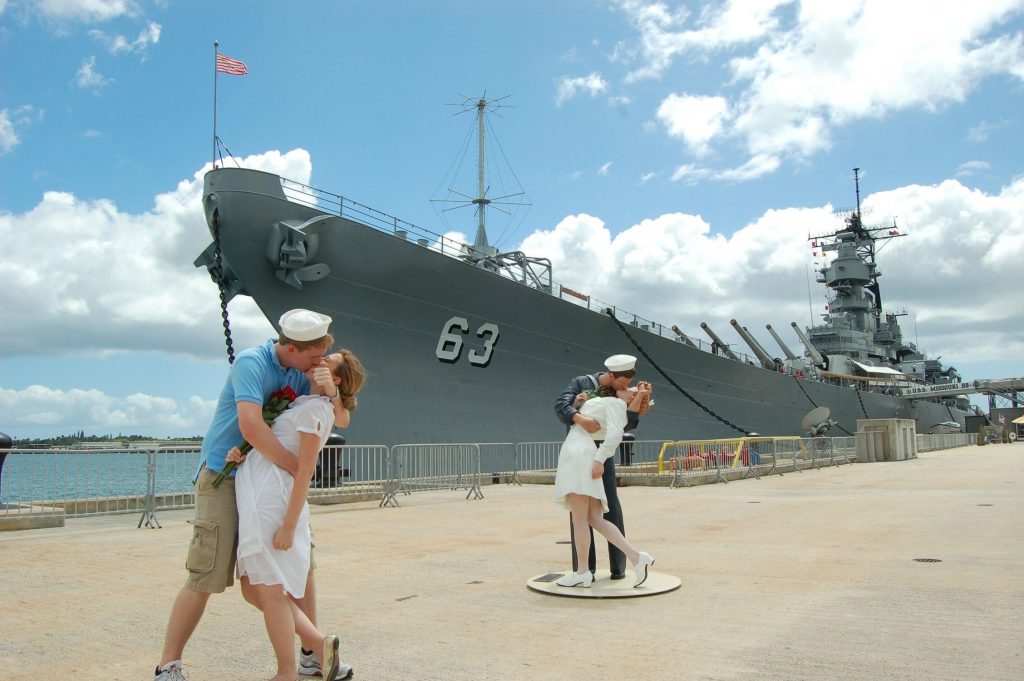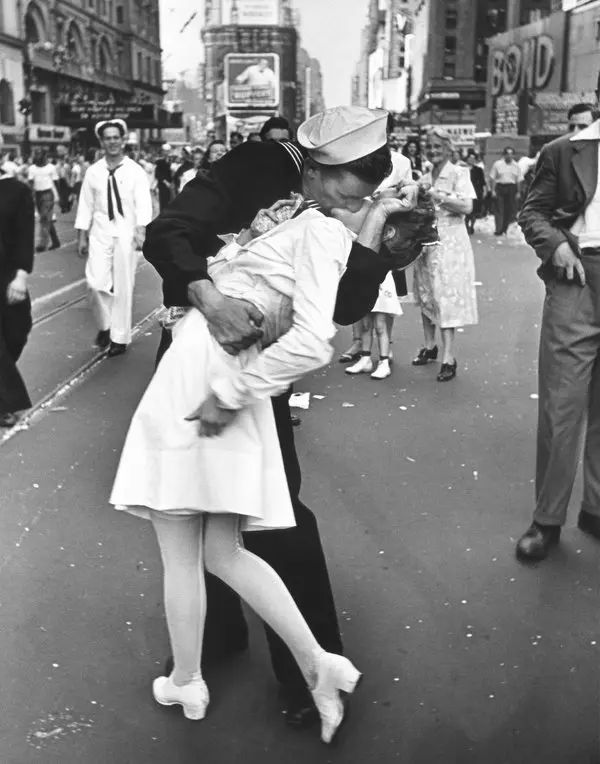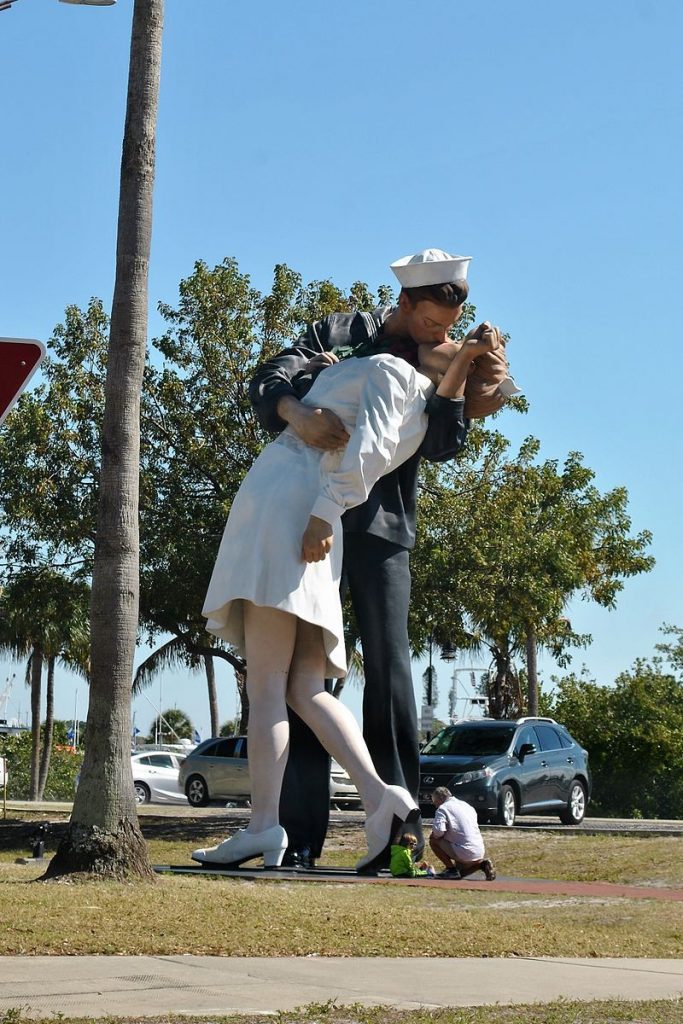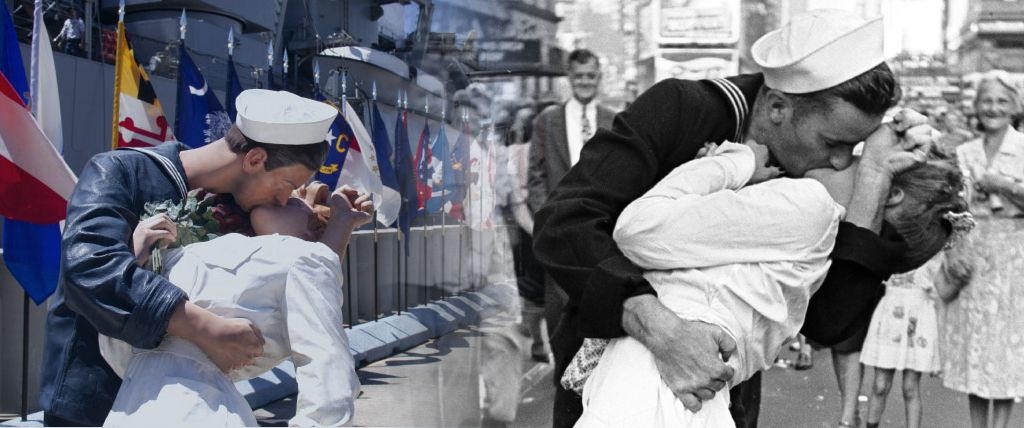The “Unconditional Surrender” statue, often called the “Kissing Statue,” is a famous monument that captures a historic moment in American history. Located at Pearl Harbor, Hawaii, this statue represents the end of World War II. Its powerful image of a sailor kissing a nurse is iconic, symbolizing peace, victory, and relief after years of conflict.
In this blog post, we will explore the statue’s history, significance, and why it’s a popular attraction for visitors. We will also discuss some interesting facts that make this statue stand out.

The Kissing Sailor
George Mendonsa was a U.S. Navy sailor during World War II. He is best known as the “kissing sailor” in a famous photograph taken on August 14, 1945. The photo shows him kissing a nurse in Times Square during celebrations for the end of the war. The image, taken by photographer Alfred Eisenstaedt, became one of the most iconic pictures of the 20th century. It symbolized the joy and relief felt across the country when the war ended.

Mendonsa later explained that he kissed the nurse in the excitement of the moment. He had just heard the news of Japan’s surrender. The nurse, Greta Zimmer Friedman, didn’t know him, but they shared a spontaneous embrace. For many years, the identities of the two were unknown, but Mendonsa was confirmed as the sailor in the 2010s.
George Mendonsa lived a quiet life after the war. He became a fisherman and settled in Rhode Island. He died on February 17, 2019, at the age of 95.
What Is the Unconditional Surrender Statue?
The “Unconditional Surrender” statue is a large sculpture that depicts a sailor and a nurse sharing a kiss. The statue is located near the USS Missouri Battleship where the unconditional surrender was signed between Japan and the Allied Forces. The statue is based on a famous photograph taken by Alfred Eisenstaedt on August 14, 1945, the day Japan surrendered to the Allies. This day is known as V-J Day (Victory over Japan Day), marking the official end of World War II.
The photograph and statue capture the spontaneous joy and celebration that swept across the United States when the news of the war’s end broke. The image of the sailor and nurse has since become a symbol of peace and relief.
Why Is It Called the “Kissing Statue”?
The statue got its nickname because of the passionate kiss shared between the sailor and nurse. Though it’s officially called the “Unconditional Surrender” statue, most people simply refer to it as the “Kissing Statue.”
The kiss was spontaneous. The sailor, overjoyed by the war’s end, grabbed a nearby nurse and kissed her in Times Square. Both were strangers, but in that moment, they shared the emotions of an entire nation.
Why Is It Located at Pearl Harbor?
Pearl Harbor is one of the most significant sites in American history, especially regarding World War II. On December 7, 1941, Japan attacked Pearl Harbor, pulling the United States into the war. The war lasted until August 1945, with the U.S. emerging victorious.
By placing the statue at Pearl Harbor, it serves as a reminder of the start of the war and its eventual end. The statue connects the solemn history of Pearl Harbor with the joy and relief felt after the war’s conclusion.
What Does the Statue Represent?
The “Unconditional Surrender” statue represents several important themes:
- Victory: The end of World War II marked a major victory for the Allies.
- Peace: The kiss symbolizes the relief and peace that came after years of fighting.
- Unity: The statue shows how people from all walks of life came together to celebrate the war’s end.
- Hope: It reminds us that even in times of conflict, peace and hope can prevail.
Interesting Facts About the Unconditional Surrender Statue
Here are some fun and interesting facts about the “Kissing Statue”:
- Based on a Real Photo: The statue is modeled after a photograph by Alfred Eisenstaedt, which appeared in LIFE magazine.
- Multiple Locations: There are several replicas of the statue around the United States, including San Diego, California, and Sarasota, Florida.
- Controversy: Some people view the kiss as controversial, as it was not consensual. This has led to debates about the statue’s message in recent years.
- Larger Than Life: Some replicas of the statue are over 25 feet tall, making it an impressive sight for visitors.
Why Visit the Kissing Statue?
Visiting the “Unconditional Surrender” statue at Pearl Harbor is a meaningful experience for several reasons:
- Historical Significance
The statue ties directly to the events of World War II, especially for those visiting Pearl Harbor to learn about the attack in 1941.
- Iconic Imagery
The statue represents one of the most famous images in American history.
- Reflection on Peace
While Pearl Harbor is a reminder of war’s devastation, the statue reminds visitors of the peace that followed.
- Great Photo Opportunity
Standing next to this towering statue is a must for many tourists, making for a memorable photo to commemorate the visit.
Where Are Other Replicas?
If you can’t make it to Pearl Harbor, you can still see other replicas of the statue around the U.S. and beyond. Some locations include:
- San Diego, California: Another large version of the statue can be found near the USS Midway Museum.
- Sarasota, Florida: This location has a replica of the “Kissing Statue” in its Bayfront Park.
- New York City, New York: A temporary installation of the statue was displayed in Times Square, where the original kiss took place.
- Normandy, France: A replica can also be found in France, near the D-Day landing sites, connecting both the European and Pacific theaters of the war.

The Legacy of the Kissing Statue
The legacy of the “Unconditional Surrender” statue is one that speaks to the emotions of an entire generation. It stands as a reminder of the price of war, the joy of victory, and the hope for peace. While its image is sometimes debated, there’s no denying the impact it has had on American culture.
For many, the statue represents a time of unity and celebration. It captures a fleeting moment when the world was finally at peace after years of uncertainty and turmoil.
Conclusion
The “Unconditional Surrender” statue at Pearl Harbor is more than just a piece of art. It is a symbol of peace, victory, and relief after one of the most devastating wars in history. Visitors to Pearl Harbor can not only reflect on the events of World War II but also celebrate the triumph of peace.
If you’re ever in Pearl Harbor, make sure to stop by the “Kissing Statue.” It’s a powerful reminder of what the world can achieve when we come together in pursuit of peace.

